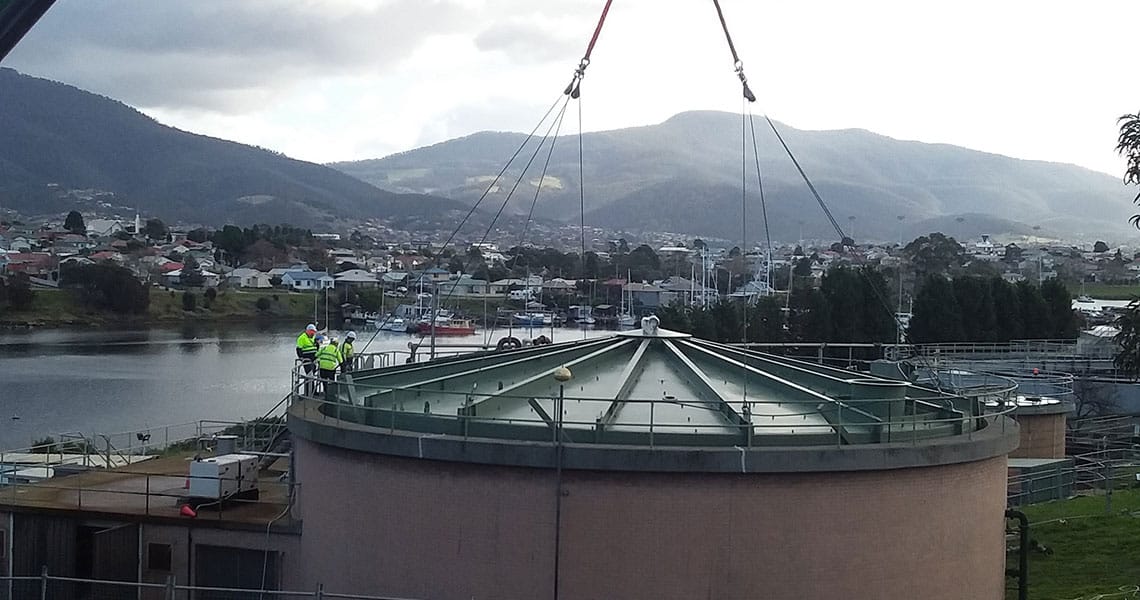External Heating Units Upgrade Wastewater Treatment
A new sludge heater supplied by HRS Heat Exchangers has formed part of an upgrade to one of Tasmania’s most important wastewater treatment plants, ensuring it is fit for purpose for the next 40 years.
corrugated tube heat exchanger to warm the recirculating sludge and maintain optimum operating temperatures in the main digester. As Tasmania is the southernmost and coldest state in Australia, maintaining digester temperature is crucial to efficient operation, particularly in the winter months when there is an increase in heat loss from the liquid sludge nearer the top of the tank.
Jim Foley, Project Engineer for Aquatec Maxcon, explained why the company chose HRS to supply the new digester heating unit: “
There were a number of heat exchanger suppliers that we could have chosen, but one of the issues we faced was a limit of the space available for the heat exchanger, and the HRS unit had slightly smaller dimensions than some others for the same thermal performance. HRS provided me a with a reference, and after that and a performance test, we were happy to go with the HRS product.”
The supplied unit consists of a six-module
HRS DTI Series heat exchanger to raise the sludge temperature from 33°C to 36°C, with a capacity to process 72,000 litres of sludge every hour using hot water supplied by a separate boiler. To facilitate routine maintenance and cleaning, the heating unit has been installed outside the digester; a design which is rapidly becoming the norm for biogas plants due to the benefits it provides over internal designs.
Despite the challenges of a global pandemic, the heat exchanger, which was manufactured at HRS’s factory in Spain, was delivered well ahead of the required installation date. Since operation, the unit has performed according to specification, dealing with a range of feedstocks and sludges, including sewerage sludge and as fats and oils from trade wastes.
“
As an engineer on a project such as this, you tend to focus on areas where you have problems,” added Jim. “
I’m happy to say there were no problems with the heat exchanger.”" class="g-btn g-btn-orange">Brochure
